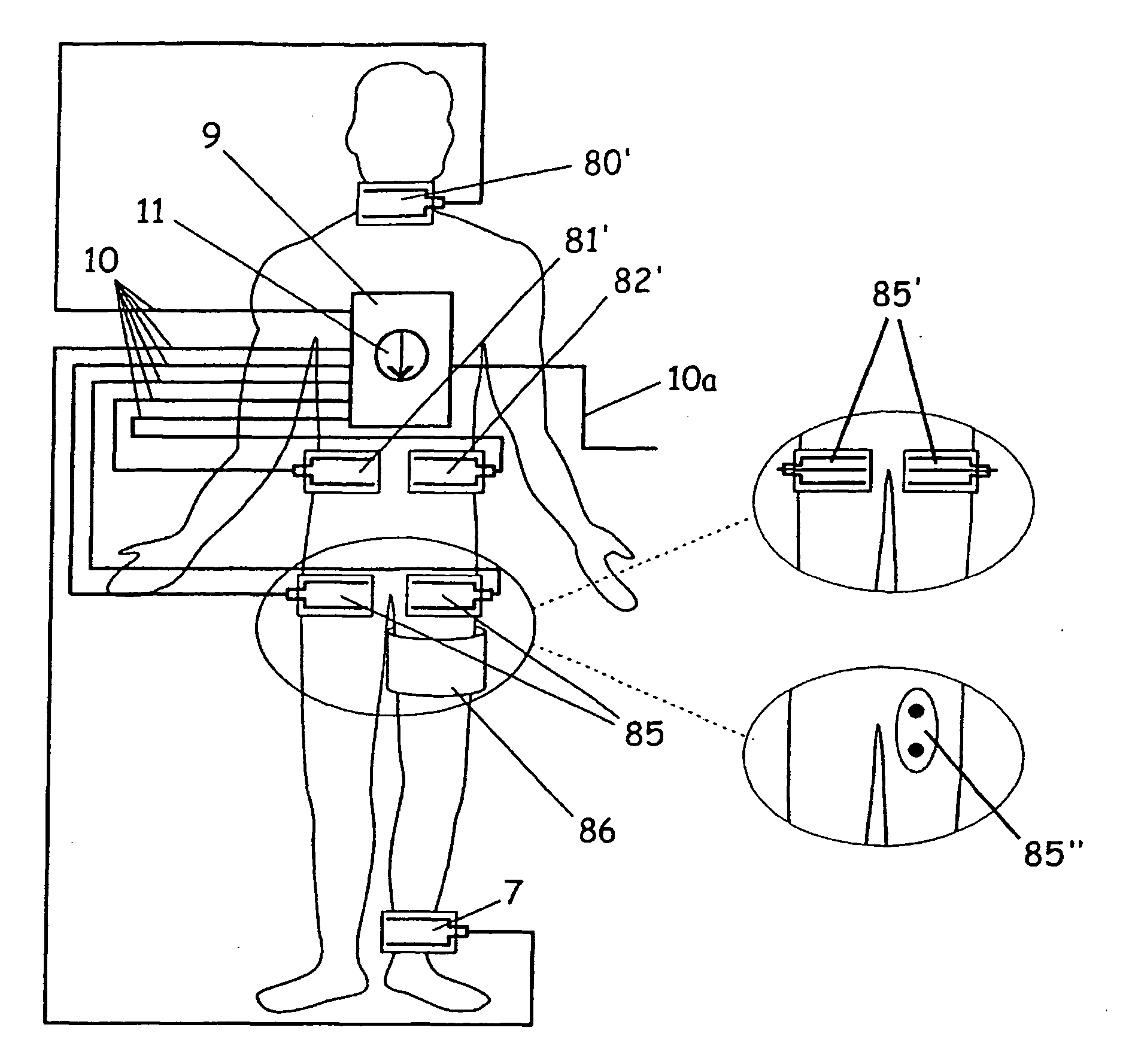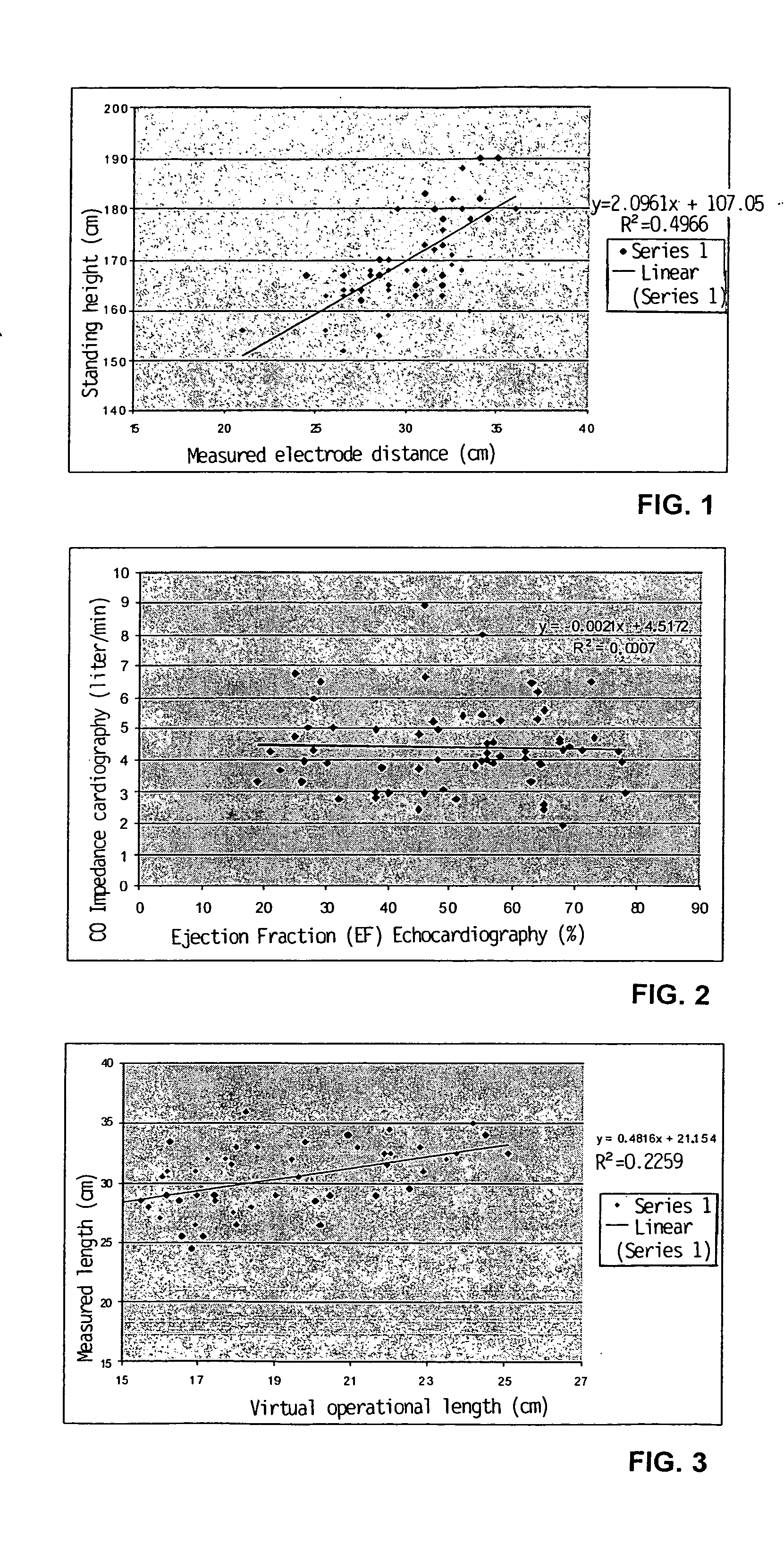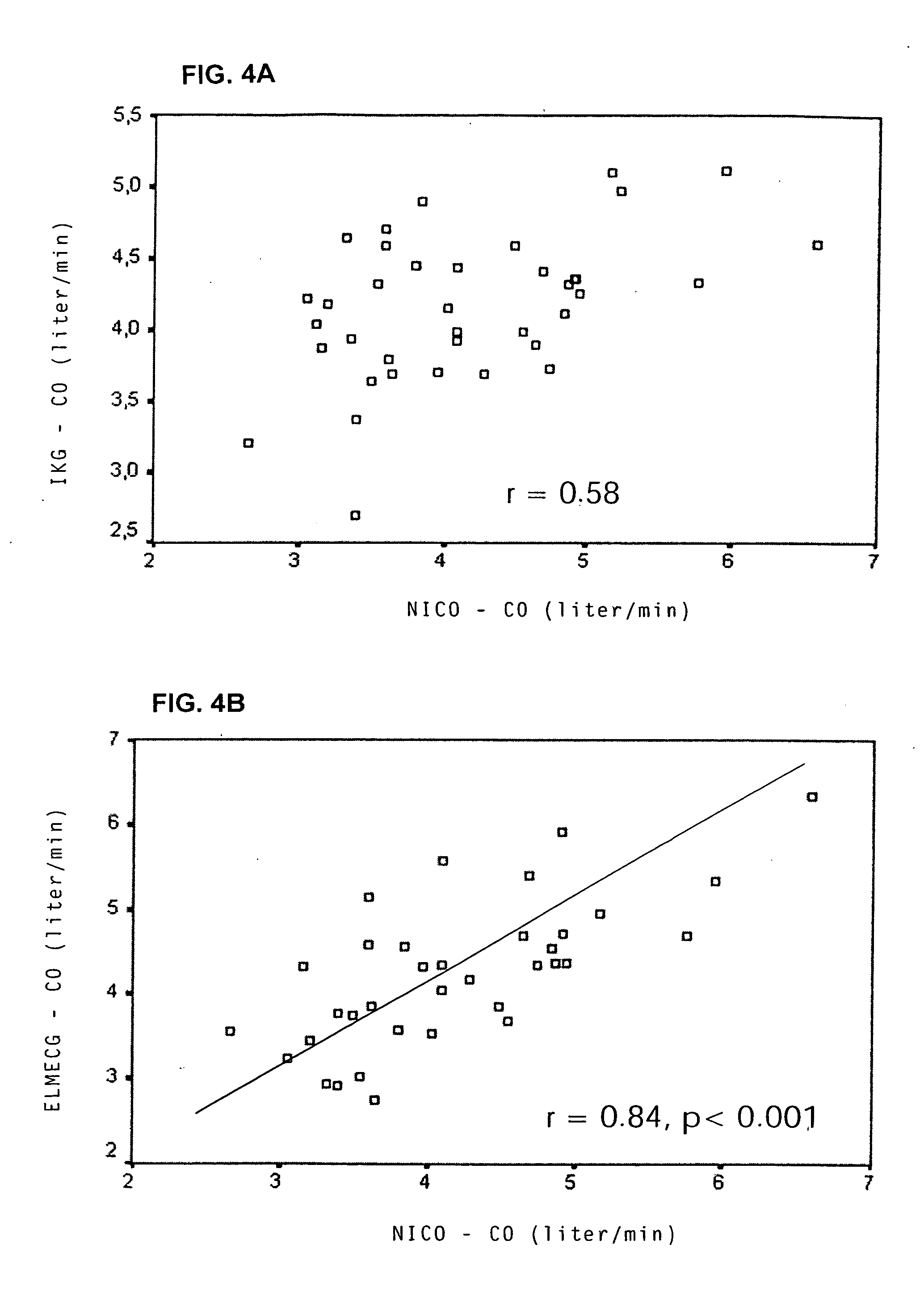Impedance-based measuring method for hemodynamic parameters
a hemodynamic parameter and measurement method technology, applied in the field of non-invasive methods, can solve the problems of high cost of invasive methods with regard to disposable catheters, inconvenient monitoring of patients by echocardiography, and high cost of invasive methods
- Summary
- Abstract
- Description
- Claims
- Application Information
AI Technical Summary
Benefits of technology
Problems solved by technology
Method used
Image
Examples
Embodiment Construction
[0120] In the method of the present invention for measuring the volume, the composition and the movement of electroconductive body fluids, based on the electrical impedance of the body or a body segment, especially for performing electromechanocardiography (ELMEC) or impedance cardiography (IKG) measurements for determining hemodynamic parameters, an alternating measuring current of at least one frequency is introduced into the body, and the impedance and temporal variations thereof of essentially the same body segment through which the alternating measuring current flows are measured for at least two different measuring lengths, essentially in the longitudinal direction of the body.
[0121] More particularly, in an impedance cardiography (IKG) measurement for determining hemodynamic parameters, such as cardiac stroke volume, an alternating measuring current is impressed by current electrodes, which are spaced from each other on the body surface by a current electrode measuring lengt...
PUM
 Login to View More
Login to View More Abstract
Description
Claims
Application Information
 Login to View More
Login to View More - R&D
- Intellectual Property
- Life Sciences
- Materials
- Tech Scout
- Unparalleled Data Quality
- Higher Quality Content
- 60% Fewer Hallucinations
Browse by: Latest US Patents, China's latest patents, Technical Efficacy Thesaurus, Application Domain, Technology Topic, Popular Technical Reports.
© 2025 PatSnap. All rights reserved.Legal|Privacy policy|Modern Slavery Act Transparency Statement|Sitemap|About US| Contact US: help@patsnap.com



